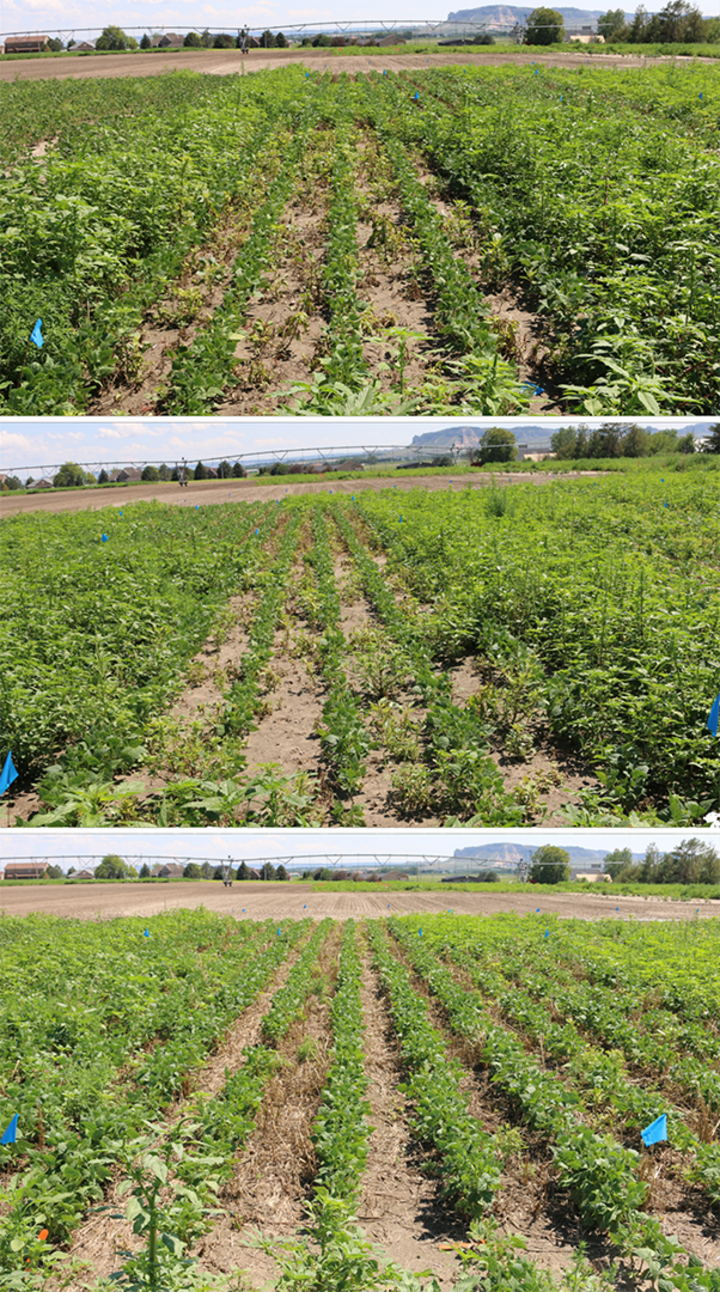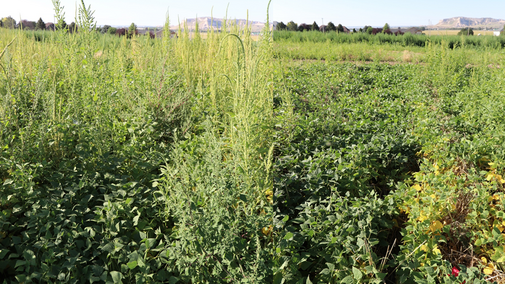A review of all the literature by Osipitan et al. 2018 found that the more biomass a cover crop produces, the better the weed control will be. Small grains are the clear winner for both suppressing weed growth and generating biomass: barley, rye, triticale, wheat and oats are all good options. What is best for you comes down to seed availability and your rotation. If you grow wheat, planting barley, rye or triticale might not be a good idea, but using wheat as a cover crop can help. Using mixes is not recommended when weed control is the goal, as the various species will compete against each other.
The Weed Science Program at the Panhandle Research, Extension and Education Center has been working with cover crops for weed control since 2019. For all our field trials, we have used winter wheat, planted at 100 pounds an acre. A higher seeding rate might help with weed control, but it isn’t something we have investigated yet. With all the trials discussed below, the cover crop was terminated within three days of planting dry bean, through an application of glyphosate.
Study One: Winter Seeded Cover Crops Before Dry Bean
In 2019-2021, winter wheat was seeded in October, and dry bean was planted in the last week of May. There were two treatments — those plots which had a cover crop and those that didn’t. For both treatments, the same herbicides were applied: glyphosate + Prowl® H20 + Outlook® applied pre-crop emergence (PRE), followed by Raptor® plus Basagran® at the third trifoliate. Palmer amaranth was not controlled where cover crops were not used, while season-long weed control was observed when a cover crop was planted (Figure 1).
While a fall-planted cover crop can provide great weed control benefits, most dry bean growers are preceding their dry bean crop with corn and a fall seeded cover crop just isn’t possible due to the timing of corn harvest. What happens if the cover crop is planted in the spring?
Study Two: Spring Seeded Cover Crops Before Dry Bean
Between 2020 and 2023, the same herbicide treatments described in study one were applied. However, three cover crop treatments were used: no cover crop, winter wheat planted on March 15, and winter wheat planted on April 15. A March 15 cover crop appears to bring almost the same amount of weed suppression in years where there is good winter and spring moisture as a fall planted cover crop (Figure 2). However, the April planted cover crop did not provide much benefit. There simply were too few days to get enough biomass established between April 15 and dry bean planting.
Conclusions
A similar trial was conducted in sugarbeet, with a cover crop planted March 15, and the weed control benefits were simply not there. Between March 15 and sugarbeet planting in April, there wasn’t enough time to establish a vigorous cover crop. Dry bean may be able to uniquely benefit from a cover crop, either planted in the fall or late winter/early spring, because they are planted so late in the season.
A cover crop can work for suppressing weeds in dry bean, but you need to pick the right cover crop, plant the cover crop at the right time, and hope there is enough moisture after cover crop planting to get adequate biomass.

References
Osipitan OA, Dille A, Assefa Y, Knezevic SZ (2018) Cover Crop for Early Season Weed Suppression in Crops: Systematic Review and Meta-Analysis. Agronomy Journal 110(6):221-2221

